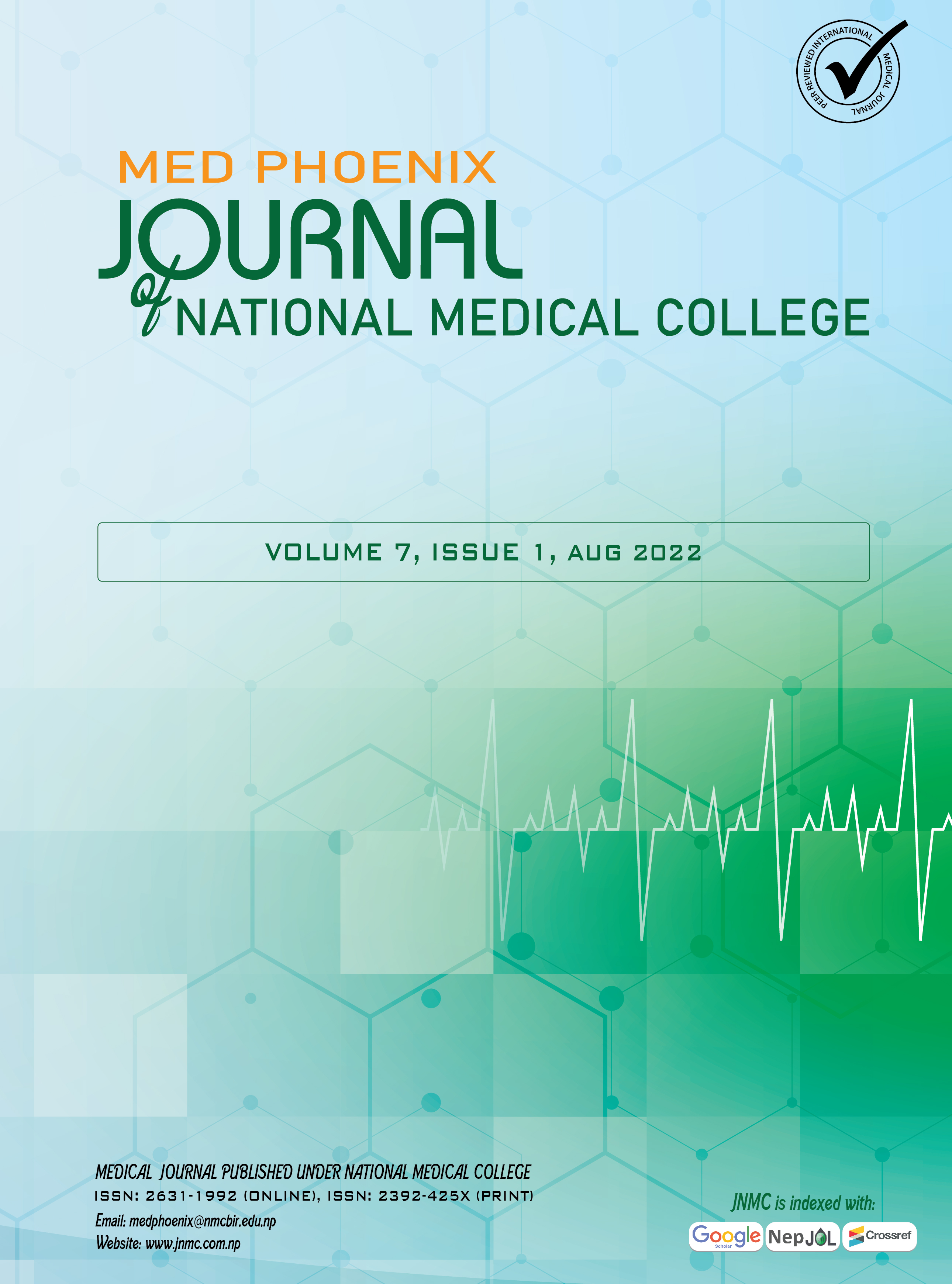A Descriptive Cross-Sectional Study on the Incidence, Risk Factor and Outcome of Delirium in Surgical Patients in the Semi-Closed Intensive Care Unit
DOI:
https://doi.org/10.3126/medphoenix.v7i1.47352Keywords:
Delirium, Incidence, Intensive care units, Risk factors, SurgeryAbstract
Introduction: There is a variation in risk factors and outcome of delirium in surgical patients in different studies. This study was conducted to determine the incidence, risk factors, and outcome of delirium in the surgical semiclosed intensive care unit in a developing country.
Materials and Methods: This descriptive study was done in 82 patients of age≥18 years that underwent non-neurological surgery and admitted for more than 24 hours in a level three intensive care unit of medical college from January 10, 2021 to January 9, 2022. The whole sampling method was used in our study. The Confusion Assessment Method-ICU and Richmond Agitation Sedation Scale were used to diagnose delirium and sedation,
respectively, along with a checklist to assess risk factors. All data was transferred to the excel sheet and transferred to a statistical package for the social sciences-16. Chi-square test and Fisher’s exact probability test were
used to detect the difference between groups in the univariate analysis, as appropriate. The risk factors were analysed using binary logistic regression.
Result: Of the 82 ICU admissions 28(34.1%) developed delirium. Hyperactive delirium was the most common motor subtype 12(42.8%). The mean duration of delirium was 4.69±5.06 days. Hypertension and alcohol were
identified as risk factors for delirium. Delirious patients had a longer length of stay in the ICU (10.1 ±12.7 vs 5.1 ±4.2 days) with no impact on the duration of mechanical ventilation, mortality, reintubation, and unplanned
extubation.
Conclusion: Early recognition of risk factors for delirium in surgical patients can decrease the mortality and morbidity of surgical patients.
Downloads
Downloads
Published
Versions
- 2022-08-21 (3)
- 2022-08-21 (2)
- 2022-08-19 (1)
How to Cite
Issue
Section
License
Copyright (c) 2022 Med Phoenix

This work is licensed under a Creative Commons Attribution 4.0 International License.
This license enables reusers to distribute, remix, adapt, and build upon the material in any medium or format, so long as attribution is given to the creator.
Copyright on any research article is transferred in full to MED PHOENIX upon publication. The copyright transfer includes the right to reproduce and distribute the article in any form of reproduction (printing, electronic media or any other form).




